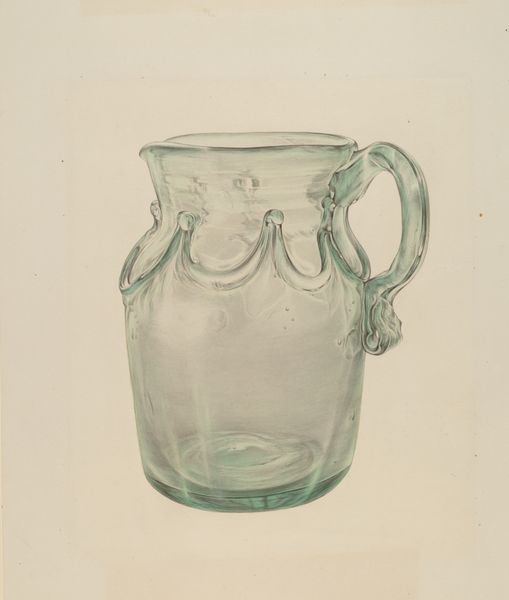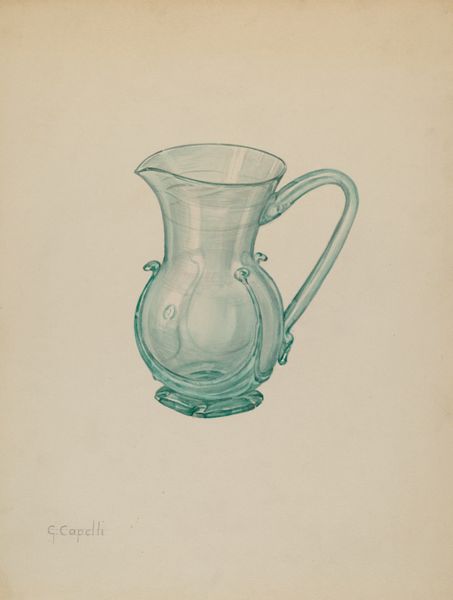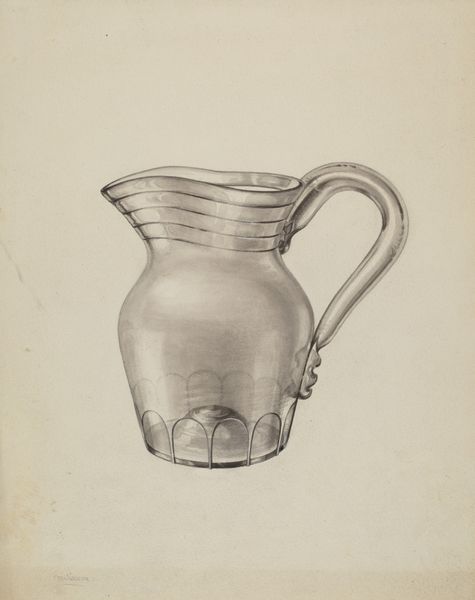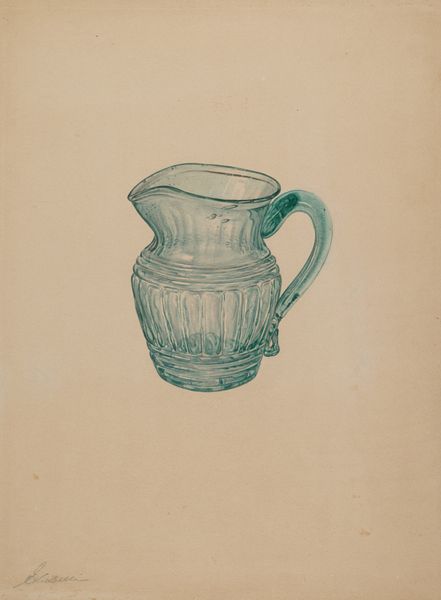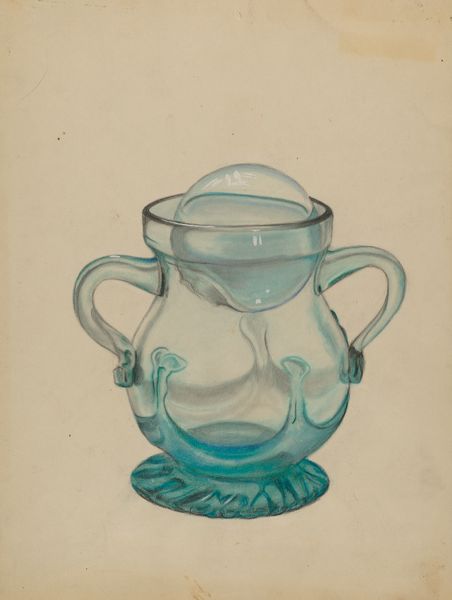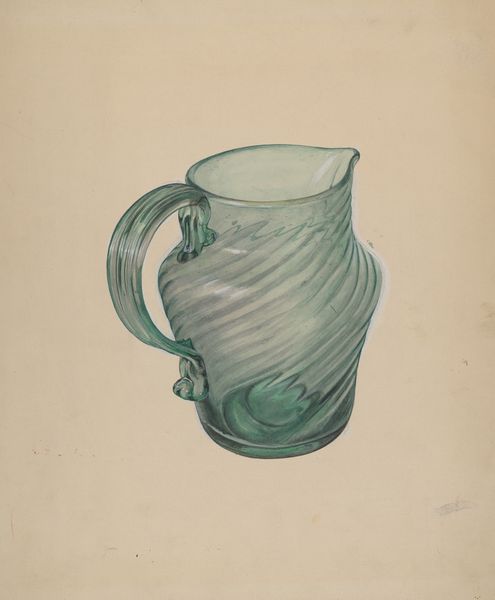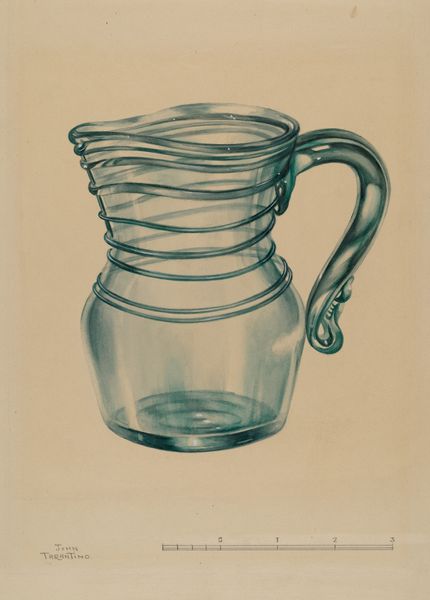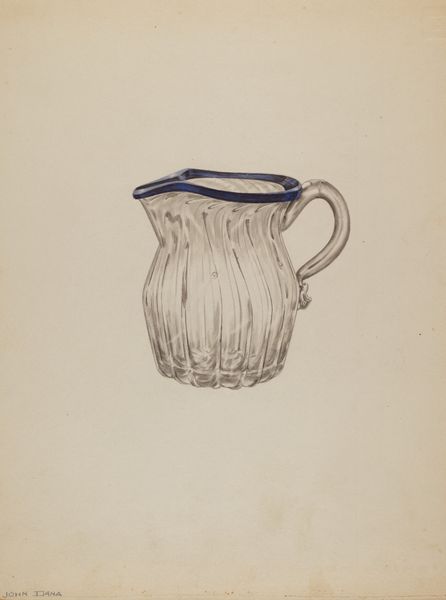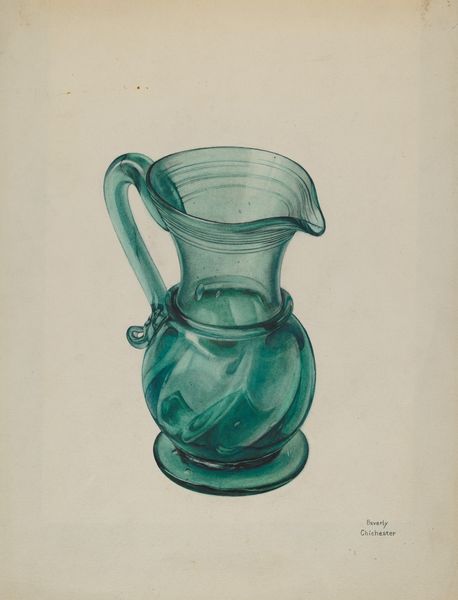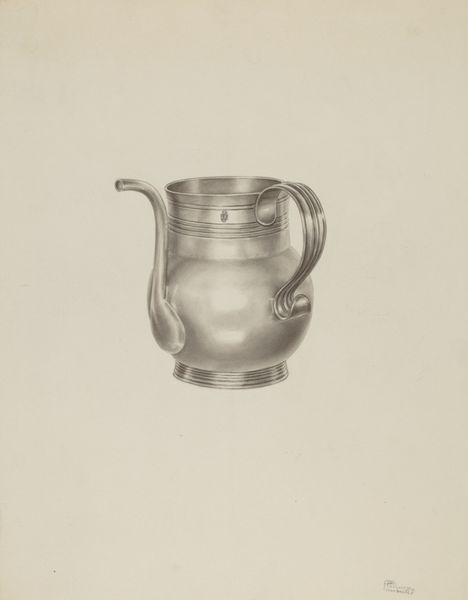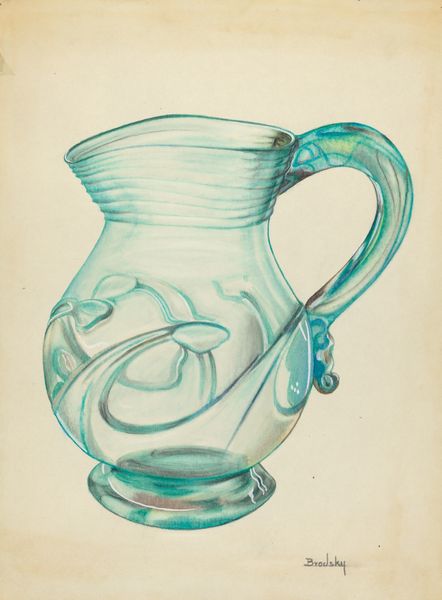
drawing, watercolor
#
drawing
#
watercolor
#
pencil drawing
#
watercolour illustration
#
watercolor
#
realism
Dimensions: overall: 35.5 x 24.4 cm (14 x 9 5/8 in.)
Copyright: National Gallery of Art: CC0 1.0
Curator: We're looking at V.L. Vance’s "Glass Pitcher," likely created around 1940, rendered in watercolor and drawing. Editor: It's serene. The transparency of the glass is captured with such soft, muted blues and grays. It almost feels like a hazy memory. Curator: Notice how Vance uses the watercolor medium to convey the object’s inherent qualities—its shape, the reflective surfaces, the delicate interplay of light and shadow, all of which bring an extraordinary luminosity to the artwork. There's a spiral detail integrated into the design that gives the piece visual complexity. Editor: This pitcher whispers of the everyday lives of women from the mid-20th century. Who used this pitcher, where did she get it from, and did she buy it new? During the rise of mass production and consumerism, the rise of marketing was created to fulfill social aspirations by manufacturing desire through domestic roles. It makes me question the intended audience for this image and how gender might play a role in understanding domestic life in this moment. Curator: An interesting proposition. However, focusing on the artistic choices here, the composition adheres to a strict representational mode, giving primacy to an analytical exploration of the subject and not a social interpretation of an artist. There is no moral or social judgement within the artwork. The skill evident here in the realism created using layers of translucent watercolor alone is compelling. Editor: True, yet the act of representation is never neutral. The artist's selection of subject matter speaks to broader themes of domesticity and consumption during this era. Images such as this can reinforce gendered roles and aspirations in subtle, yet powerful ways. Curator: I appreciate how this seemingly simple study reveals the potent, intricate conversation between formal structure and cultural narratives. It truly showcases the complex artistry of conveying everyday objects. Editor: And prompts us to consider the world it mirrors, its beauty, and its limitations. Thank you for viewing.
Comments
No comments
Be the first to comment and join the conversation on the ultimate creative platform.
